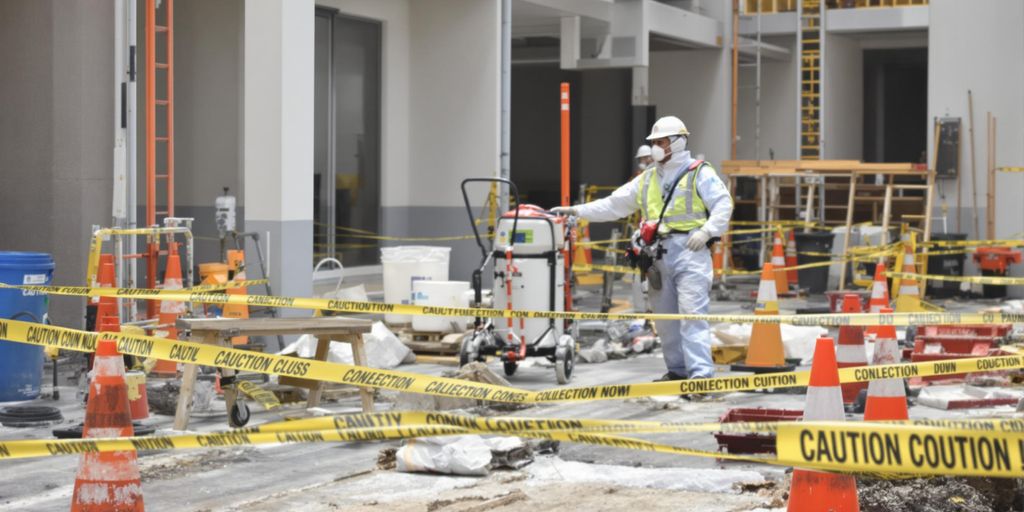
Key Federal Asbestos Regulations
Federal laws around asbestos aim to protect the public from its harmful effects. The Environmental Protection Agency (EPA) oversees many of these rules, including the Asbestos Hazard Emergency Response Act (AHERA) and the Clean Air Act (CAA). These regulations focus on controlling asbestos in schools, homes, and during construction activities. It’s important for homeowners to know that federal rules often prohibit unsafe handling or disposal of asbestos-containing materials. Understanding these laws can help avoid legal trouble and ensure safe practices.
State-Specific Asbestos Guidelines
Each state has its own set of asbestos regulations, which often go beyond federal requirements. Some states may require specific permits for asbestos removal, while others might mandate inspections before any renovation or demolition. Homeowners should check with their local environmental or health department to stay compliant. Treatment of asbestos issues can vary widely depending on your location, so knowing the rules where you live is key.
Why Homeowners Should Be Concerned
Asbestos in homes isn’t just a legal issue—it’s a health risk. Exposure to asbestos fibers can lead to serious illnesses, including mesothelioma and lung cancer. Homeowners should be particularly cautious during renovations or repairs, as disturbing asbestos materials can release dangerous fibers into the air. Being aware of the laws ensures you take the right steps to protect your family and avoid costly penalties. Ignoring regulations could lead to fines or even lawsuits if someone is harmed.
Health Risks Associated With Asbestos Exposure
Common Diseases Linked to Asbestos
Asbestos exposure is a serious health concern, with long-term risks that can affect individuals and families alike. Prolonged exposure to asbestos fibers has been directly linked to several life-threatening diseases. These include mesothelioma, a rare cancer that affects the lining of the lungs, chest, or abdomen; asbestosis, a chronic lung condition caused by inhaling asbestos fibers; and lung cancer, which can develop years after exposure. These conditions often take decades to manifest, making early detection nearly impossible.
How Asbestos Affects Indoor Air Quality
When asbestos-containing materials are disturbed, tiny fibers can become airborne, contaminating the air inside a home. Inhaling these fibers can lead to respiratory issues over time, even for those who are not directly handling the material. Poor indoor air quality caused by asbestos can contribute to coughing, shortness of breath, and other chronic respiratory symptoms. This is why proper handling, especially during home rehab projects, is critical to minimizing exposure risks.
Long-Term Impacts on Families
The long-term effects of asbestos exposure don’t just impact the individual; they can ripple through families as well. Secondary exposure is a real concern—family members can unknowingly inhale fibers brought into the home on clothing or tools. Over time, this exposure can result in the same severe health conditions mentioned earlier. Additionally, the emotional and financial strain of dealing with asbestos-related illnesses can weigh heavily on families, from costly medical treatments to the challenges of home rehabilitation to ensure safety.
Identifying Asbestos in Residential Properties
Common Areas Where Asbestos Is Found
Asbestos was widely used in home construction for its durability and resistance to heat. Identifying where it might be hiding in your house is key to ensuring safety. Some of the most common spots include:
- Insulation materials, particularly in older homes. Asbestos wool insulation often appears white or gray with a soft, fibrous texture.
- Flooring, especially vinyl tiles and the adhesive used to install them.
- Roofing shingles and siding, which were frequently manufactured with asbestos for added strength.
- Pipe coverings and ductwork, as asbestos was a popular choice for thermal insulation.
If your home was built before the 1980s, it’s worth paying extra attention to these areas.
Signs of Asbestos Contamination
Spotting asbestos contamination isn’t always straightforward. It doesn’t have a distinct smell or appearance, making it tricky to identify without proper testing. However, there are a few warning signs to keep in mind:
- Crumbling or damaged insulation materials, especially in attics or basements.
- Worn or broken vinyl tiles that may expose the layers underneath.
- Deteriorating pipe insulation that looks flaky or powdery.
If you notice any of these signs, avoid disturbing the material further, as it could release harmful fibers into the air.
When to Call a Professional Inspector
When in doubt, it’s always safer to consult an expert. Certified asbestos inspectors have the tools and training needed to safely evaluate your home. You should consider hiring one if:
- You’re planning major renovations or demolition work.
- You’ve discovered materials that you suspect may contain asbestos.
- Your home has a history of asbestos-related issues.
Professionals can conduct thorough testing and recommend next steps, whether that’s containment, removal, or simply monitoring the situation. Taking action early can help protect your family’s health in the long run.
Legal Responsibilities of Homeowners Regarding Asbestos
Disclosure Requirements During Property Sales
When selling a home, homeowners have a legal duty to disclose the presence of asbestos if they are aware of it. This is not just a formality; it’s a way to protect potential buyers from hidden risks. Failing to disclose asbestos can lead to lawsuits or penalties. Some states even require a professional inspection before finalizing a sale. Sellers should also provide any records of past asbestos removal or abatement work. Transparency isn’t optional—it’s the law.
Obligations for Renovation and Demolition
Before starting any renovation or demolition project, homeowners need to check for asbestos, especially in older properties. Federal and state laws often require an inspection by a certified professional. If asbestos is found, it must be handled according to strict guidelines, which usually means hiring licensed abatement experts. DIY removal might seem tempting to save money, but it’s often illegal and highly unsafe. Plus, improper handling can release harmful fibers into the air, causing long-term health risks, including addiction rehab challenges for individuals exposed to airborne toxins.
Penalties for Non-Compliance
Ignoring asbestos laws can come with serious consequences. Homeowners may face hefty fines, lawsuits, or even criminal charges for failing to follow regulations. For instance, improperly disposing of asbestos materials can violate environmental laws. Non-compliance can also delay property sales or renovations, leading to additional costs and stress. Homeowners should consult local and federal guidelines to avoid these pitfalls and ensure they’re meeting all legal obligations.
Safe Practices for Handling Asbestos in Homes
When DIY Asbestos Removal Is Not Advisable
Handling asbestos on your own can be risky, especially without the right equipment or training. Disturbing asbestos-containing materials can release harmful fibers into the air, increasing health risks. Homeowners should avoid attempting removal unless they are absolutely certain of safety measures. In most cases, hiring professionals is a safer and more effective option.
Hiring Certified Asbestos Abatement Professionals
Certified asbestos abatement professionals have the expertise and tools needed to handle asbestos safely. They follow strict guidelines to ensure minimal exposure during removal and disposal. When choosing a contractor, verify their certification and experience in asbestos management. This step not only protects your health but also ensures compliance with local regulations.
Proper Disposal of Asbestos Materials
Disposing of asbestos requires careful planning and adherence to legal requirements. Asbestos waste must be sealed in labeled, leak-proof containers before being transported to designated disposal sites. Mishandling asbestos-containing materials can elevate exposure risks. For more detailed guidance, check out safe handling and disposal of asbestos. Always consult local authorities to understand specific disposal rules in your area.
Federal Agencies Overseeing Asbestos Regulations
Role of the Environmental Protection Agency (EPA)
The Environmental Protection Agency (EPA) plays a primary role in regulating asbestos use and ensuring public safety. Its guidelines focus on minimizing exposure risks, especially in residential and commercial properties. The EPA enforces laws like the Toxic Substances Control Act (TSCA) and the Asbestos Hazard Emergency Response Act (AHERA), which set rules for asbestos handling, removal, and disposal. For homeowners, the EPA provides resources to understand their responsibilities, particularly during renovations or demolitions. Their efforts aim to protect families and communities from the dangers of asbestos exposure.
Occupational Safety and Health Administration (OSHA) Guidelines
The Occupational Safety and Health Administration (OSHA) focuses on workplace safety, including environments where asbestos exposure is possible. OSHA regulations are particularly relevant for contractors, rehab facility workers, and professionals involved in asbestos abatement. These guidelines ensure that workers are properly trained, equipped with protective gear, and aware of the risks. For homeowners hiring professionals, it’s important to confirm that the team follows OSHA standards to reduce the risk of contamination.
Consumer Product Safety Commission (CPSC) Involvement
The Consumer Product Safety Commission (CPSC) oversees the safety of consumer goods, including products that may contain asbestos. While asbestos use in consumer items has significantly declined, older products like insulation, tiles, and even some appliances may still pose risks. The CPSC works to prevent these materials from endangering families, especially in homes undergoing repairs or upgrades. Homeowners should consult CPSC guidelines to identify potential hazards and ensure safe handling of asbestos-containing products. Addiction rehab centers and other facilities should also be mindful of these regulations to maintain safe environments for their residents.
State and Local Asbestos Regulations for Homeowners
Variations in State-Level Asbestos Laws
State-level laws about asbestos can differ widely, creating a patchwork of rules that homeowners must follow. Some states have stricter guidelines than federal regulations, requiring additional steps for asbestos handling or removal. For instance, certain states mandate homeowner training or certification before any asbestos-related activity. Understanding these variations is crucial to staying compliant and ensuring safety.
How Local Governments Enforce Asbestos Rules
Local governments often play a key role in enforcing asbestos regulations. They may conduct inspections, issue permits, or provide guidance on safe practices. In many areas, local agencies work hand-in-hand with federal bodies like the EPA to monitor asbestos-related activities. Enforcement actions can include fines or even legal action for non-compliance. If you’re unsure about your obligations, local government offices are a good starting point for clarification.
Resources for Understanding Local Regulations
Homeowners have several resources to help them navigate local asbestos rules. Local health departments often provide brochures or workshops. Online portals from state or municipal agencies can also offer detailed guidance. Additionally, organizations like Serenity at Summit sometimes host community events or educational sessions to raise awareness about asbestos safety and compliance.
Steps to Take After Discovering Asbestos in Your Home
Immediate Actions to Protect Your Family
Discovering asbestos in your home can be alarming, but it’s important to act calmly and responsibly. The first step is to stop any activity that might disturb the material. If asbestos is found during a home renovation, halt all work immediately, seal off the area, and restrict access to it. This can help prevent the release of harmful fibers into the air. Contacting the appropriate authorities for guidance on safe removal is essential to ensure your family’s safety.
Consulting With Licensed Asbestos Experts
Once the area is secured, your next step should be to consult with a licensed asbestos professional. These experts can assess the situation, conduct proper testing, and recommend the best course of action. Avoid handling or attempting to remove the material yourself, as improper techniques can worsen the contamination. Licensed professionals follow strict regulations, such as those outlined in asbestos-related laws, to handle and dispose of asbestos safely.
Planning for Long-Term Solutions
After addressing the immediate risk, it’s time to think about long-term solutions. This might include professional abatement to remove or encapsulate the asbestos, depending on its condition and location. Additionally, consider scheduling regular inspections to monitor any remaining asbestos-containing materials. Taking these steps can provide peace of mind and ensure your home remains a safe environment for years to come.
Financial Assistance and Insurance for Asbestos Issues
Homeowner’s Insurance Coverage for Asbestos
Dealing with asbestos in your home can be both stressful and expensive. While some homeowner’s insurance policies may provide coverage for asbestos-related issues, it’s important to review your policy carefully. Coverage often depends on whether the asbestos contamination is the result of a sudden and accidental event or long-term neglect. Policies typically do not cover removal for pre-existing conditions. Homeowners should consult their insurance provider to understand their specific coverage and consider additional riders if necessary.
Government Grants and Subsidies
Government programs may offer financial assistance to help offset the costs of asbestos removal. Local and federal grants, as well as subsidies, are often available for low-income homeowners or those living in older properties. These programs aim to reduce the health risks associated with asbestos exposure. For example, some state-level initiatives focus on funding safe removal and disposal. Homeowners can also explore financial assistance options specifically designed for asbestos-related health conditions like mesothelioma.
Cost of Professional Asbestos Removal
Hiring certified asbestos abatement professionals is usually the safest course of action, but it can come with a hefty price tag. Costs vary depending on the extent of the contamination and the size of the property. On average, homeowners might spend anywhere from $1,500 to $5,000 for professional removal. To manage these expenses, many turn to financial aid programs or insurance claims. Additionally, organizations like Evoke Wellness often provide resources to educate homeowners about their options for safe and affordable asbestos management.
Impact of Asbestos Regulations on Real Estate Transactions
How Asbestos Affects Property Value
Asbestos in a home can significantly influence its market value. Buyers are often wary of properties with known asbestos issues due to potential health risks and the cost of remediation. Homes with asbestos may sell for less, as prospective buyers factor in the expense of removal or containment. In some cases, sellers may need to address the issue before listing to attract offers. For example, asbestos presence in a property often results in a lower sale price or requires sellers to disclose the condition and arrange for remediation.
Legal Requirements for Real Estate Agents
Real estate agents have a duty to inform buyers about any known asbestos concerns in a property. This includes ensuring that sellers comply with disclosure laws, which vary by state. Agents may also need to guide clients on obtaining professional inspections or testing if asbestos is suspected. Failing to address these issues can lead to legal consequences for both the agent and the seller.
Negotiating Repairs and Remediation Costs
When asbestos is identified, it often becomes a key point in negotiations. Buyers might request that sellers cover the costs of professional removal or offer a price reduction to account for future expenses. Alternatively, both parties might agree to split the costs. Clear communication and documentation are essential to avoid disputes and ensure a smooth transaction.
Educational Resources for Homeowners About Asbestos
Workshops and Training Programs
Homeowners looking to educate themselves about asbestos can benefit from attending workshops and training sessions. These programs often provide hands-on learning opportunities, covering topics like identifying asbestos-containing materials and understanding safe handling practices. Such sessions can be invaluable for those planning renovations or addressing potential asbestos issues in older homes. Many local organizations and government agencies offer these courses, making them accessible to the community.
Online Guides and Toolkits
For those who prefer learning at their own pace, online guides and toolkits are a great option. These resources often include step-by-step instructions, videos, and checklists to help homeowners navigate asbestos concerns. The EPA asbestos site is a particularly useful platform, offering detailed information about asbestos sources, health risks, and recommended actions. Having these materials available online ensures that homeowners can access reliable information anytime.
Community Support Groups
Dealing with asbestos in your home can feel overwhelming, but community support groups provide a space to share experiences and advice. These groups often include individuals who have faced similar challenges, as well as experts who can offer guidance. Discussions may include topics like finding licensed professionals or understanding legal responsibilities. By connecting with others, homeowners can gain both emotional support and practical tips for managing asbestos issues effectively.
Future Trends in Asbestos Laws and Regulations
Emerging Technologies for Asbestos Detection
Innovative technologies are reshaping how asbestos is identified in homes and workplaces. Portable detection devices and advanced scanning tools are becoming more accessible, allowing quicker and more accurate identification of asbestos-containing materials. These advancements aim to minimize exposure risks by enabling early detection. Researchers are also exploring the use of AI-driven tools to analyze patterns and predict asbestos presence in older structures. Such technologies could revolutionize how inspections are conducted, making them safer and more efficient.
Proposed Legislative Changes
Changes to asbestos regulations continue to unfold, with several countries taking steps to tighten existing laws. For instance, the EPA’s proposed ban on certain ongoing uses of asbestos highlights a significant shift toward eliminating exposure risks. Globally, there is a push for stricter import and usage controls, as well as enhanced penalties for non-compliance. Governments are also considering mandatory training programs for contractors and homeowners who may encounter asbestos during renovations or demolitions.
Global Perspectives on Asbestos Management
Different nations are adopting varied approaches to handle asbestos issues. While some countries have implemented outright bans, others are focusing on phased restrictions. International cooperation is also growing, with organizations sharing best practices for asbestos removal and management. Future demolition or disturbance of asbestos-containing materials will likely require compliance with stricter regulatory obligations and permits, ensuring safer handling and disposal practices worldwide.







